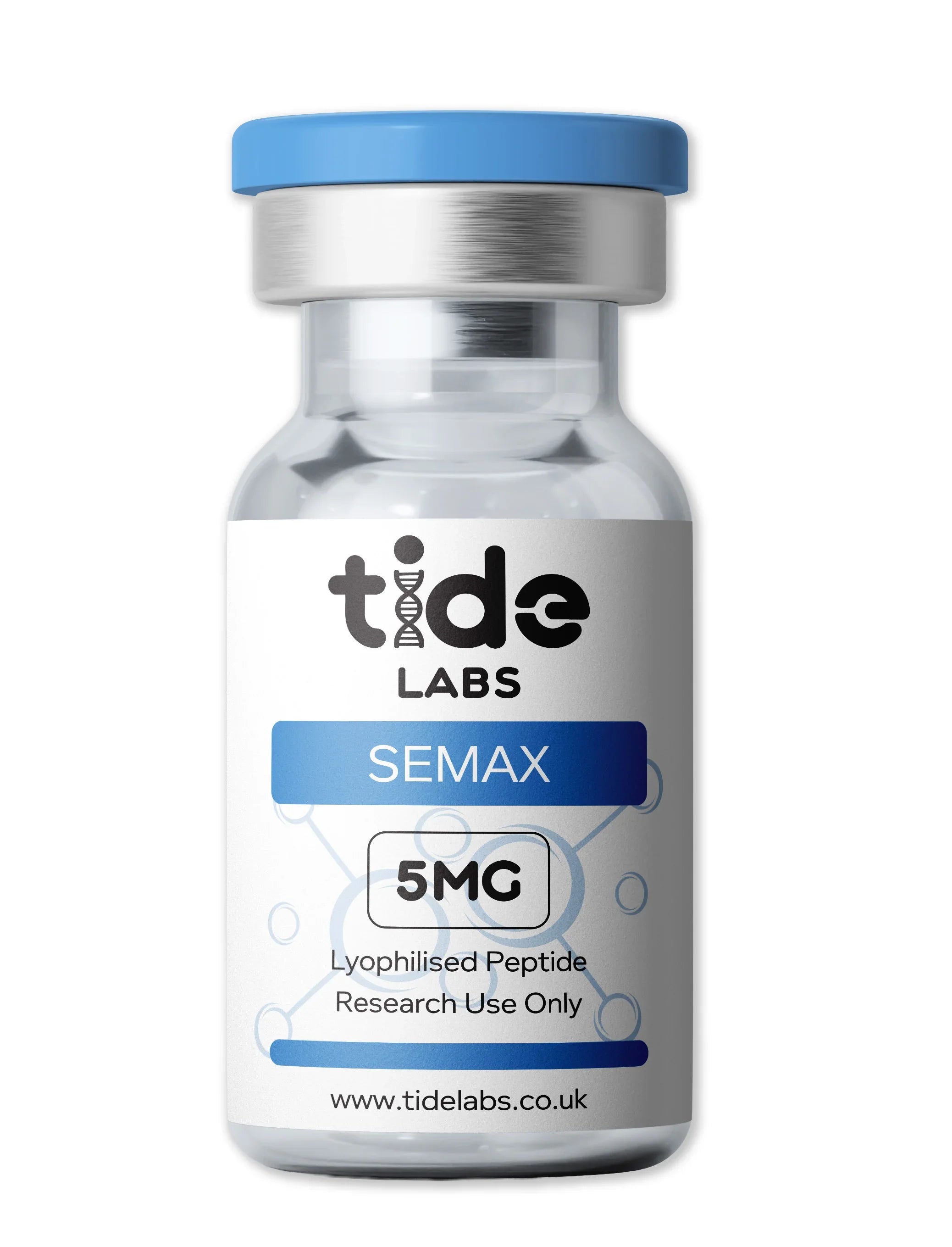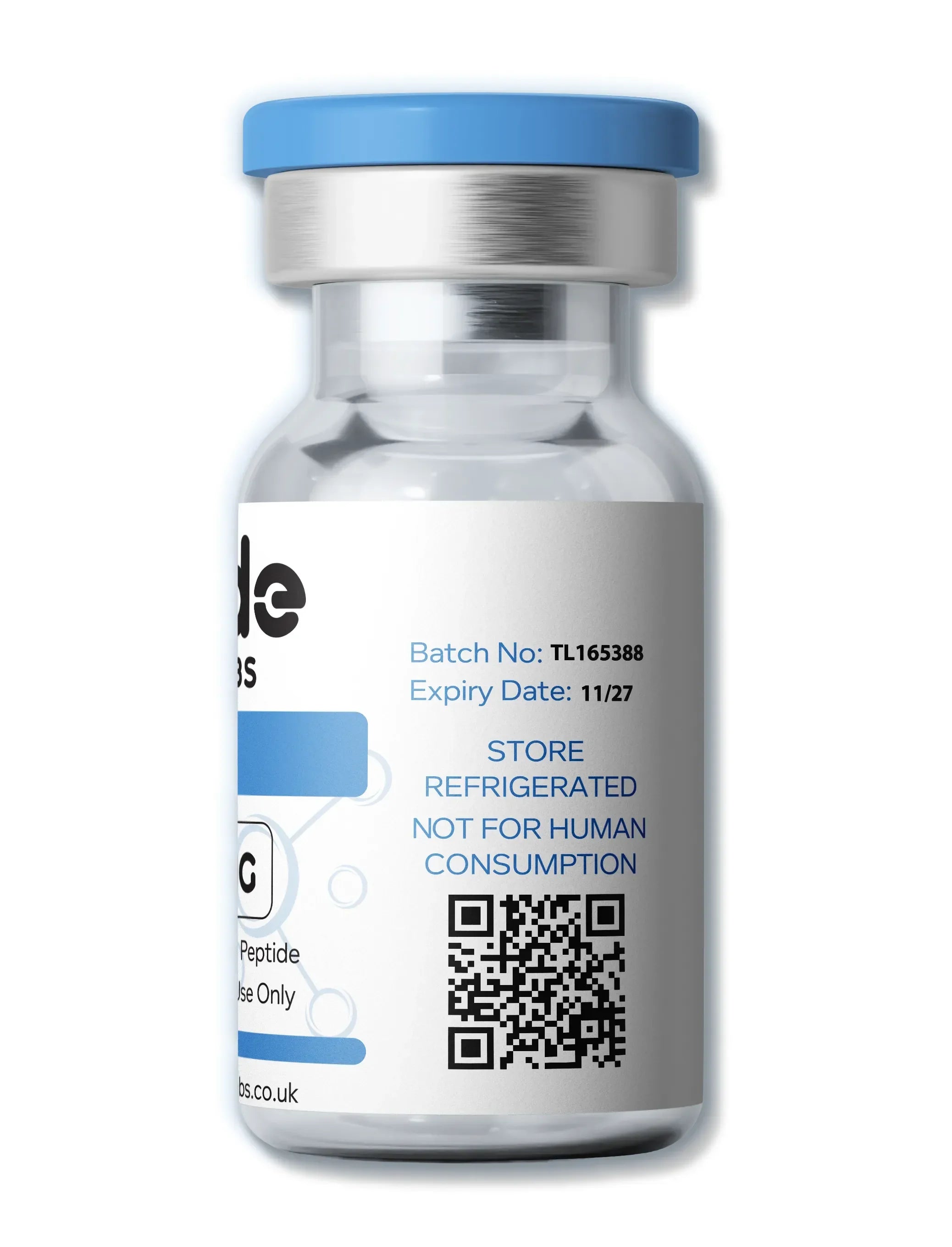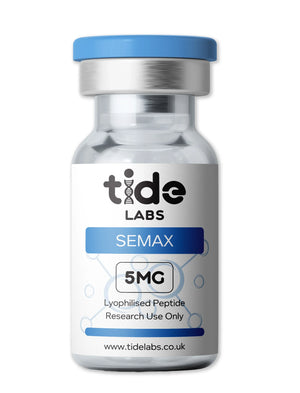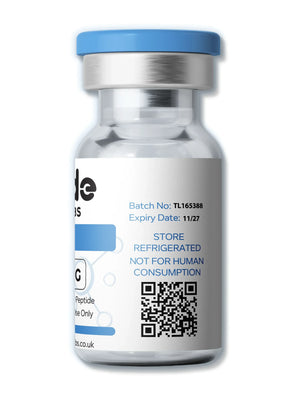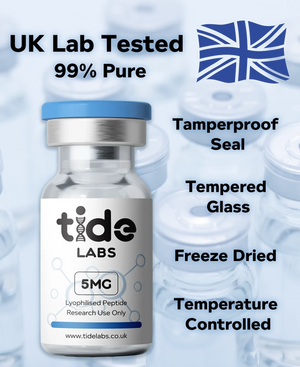Semax
Semax is a synthetic research peptide originally developed in Russia as a derivative of adrenocorticotropic hormone (ACTH 4–10 fragment). Unlike the parent hormone, Semax has no corticosteroid activity, making it of special interest in research into neurological and cognitive pathways. It has been investigated extensively in laboratory and preclinical models for potential neuroprotective, nootropic, and adaptogenic properties. While not approved for therapeutic use outside research, Semax remains a highly active subject of ongoing scientific exploration.
Area of Interest
Laboratory studies have examined Semax in several promising areas:
- Neuroprotection: Investigated for potential to reduce oxidative stress and neuronal damage in models of ischemia and traumatic injury.
- Cognitive Research: Studied for possible nootropic effects, including learning, memory, and attention mechanisms.
- Mood and Behavior Studies: Preclinical evidence suggests modulation of neurotransmitter systems such as dopamine and serotonin.
- Neurotrophic Factor Expression: Explored for its influence on brain-derived neurotrophic factor (BDNF) and other growth-related signaling pathways.
These areas make Semax an exciting peptide for research into brain health, adaptation, and neurological recovery.
Technical Information
- Chemical Name: Met-Glu-His-Phe-Pro-Gly-Pro
- Synonyms: ACTH(4–7)-Pro-Gly-Pro, Semax
- Molecular Formula: C₃₇H₅₁N₉O₁₀S
- Molecular Weight: ~751.9 g/mol
- Sequence (Amino Acid): MEHFPGP
- CAS Number: 80714-61-0
- Peptide Classification: Synthetic heptapeptide derived from ACTH fragment
Storage Guidelines
- Lyophilized peptide is stable at room temperature for short periods.
- For long-term storage, keep at −20 °C or below.
- Once reconstituted, store at 2–8 °C. Effective use period may vary depending on the solution used.
Solubility
Semax is soluble in sterile water and aqueous buffers depending on formulation and purity.
References
- Alekseeva, E. V., Andreeva, L. A., Kamensky, A. A., et al. (1992). “Neuropeptide Semax: behavioral effects and mechanism of action.” Neuroscience and Behavioral Physiology, 22(6), 475–479. https://doi.org/10.1007/BF01186122
- Myasoedov, N. F., Kamensky, A. A., & Ashmarin, I. P. (1997). “Peptide Semax in the prevention and treatment of experimental cerebral ischemia.” Pathophysiology, 4(4), 273–277. https://doi.org/10.1016/S0928-4680(97)00037-6
- Inozemtsev, A. N., Kamensky, A. A., & Ashmarin, I. P. (2008). “Semax and neurotrophin expression: insights into peptide modulation of the nervous system.” Doklady Biological Sciences, 418(1), 17–19. https://doi.org/10.1134/S0012496608010045
Certificate of Analysis (COA): Available here
